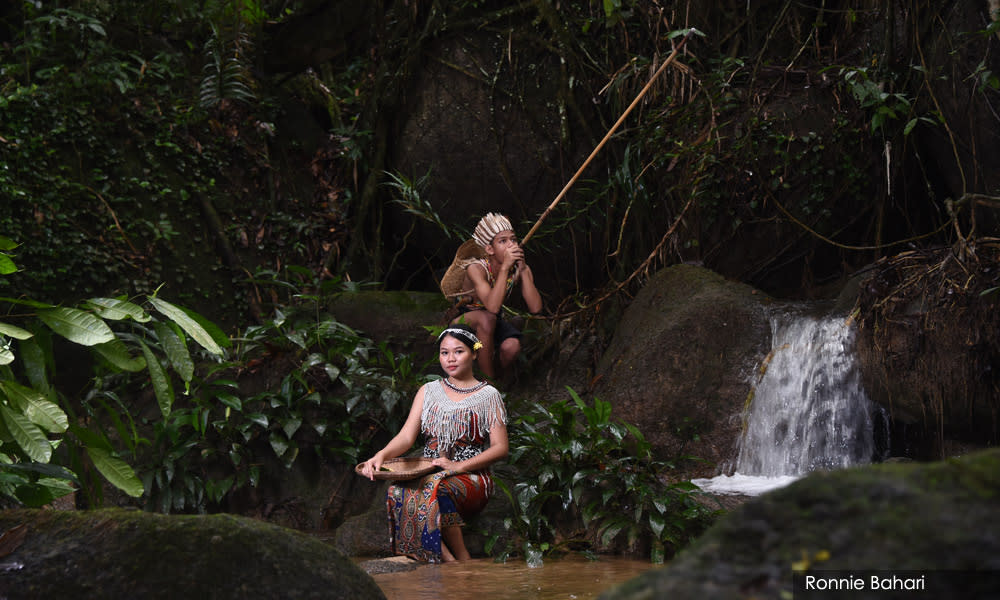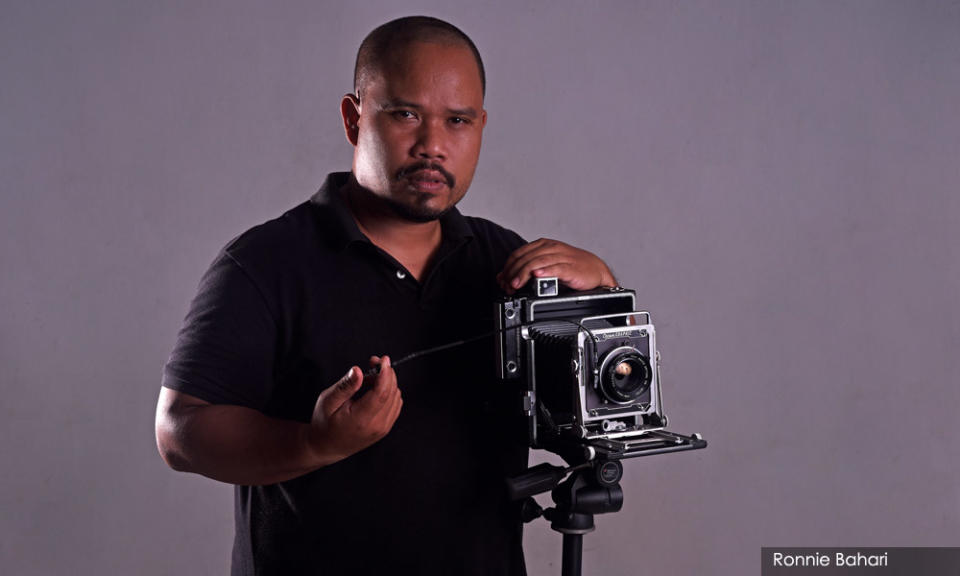Fighting Orang Asli stereotypes one snapshot at a time

MALAYSIANSKINI | When Ronnie Bahari first picked up his camera, he only had guidebooks to guide him. This was the nineties - where the age of YouTube and TikTok tutorials had yet to have its moment - and Ronnie was on the cusp of his twenties.
In school, he recognised his interest in photography but was not able to afford a camera like some of his peers. He was 24 when he bought his first camera.
“Now, (picking it up) is so much easier with YouTube and all. There are so many platforms to learn about photography, and a lot of people are sharing that knowledge.
“Back in the 1990s when I started out, no one was really sharing this knowledge about photography.
“Other photographers were more worried that if they started sharing it, their periuk nasi (opportunities to find a living) would shrink,” Ronnie told Malaysiakini.

When asked what he enjoyed about photography, Ronnie spoke of his particular interest in portraiture.
“I like taking pictures of people’s faces. If they’re children, for example, we can see honesty in their faces.
“If they’re much older, their faces become even more interesting because of their life experiences, you can get so much out of their expressions - whether it’s happiness or sadness. It’s very interesting,” he said.

He claimed that he was “very lucky” that photography was a hobby that became a career for him - and not vice versa.
After secondary school, Ronnie worked in various jobs, from travel agencies to working for the Information Department - with the latter sending him for training to sharpen his photography skills.
Ronnie - who is now based in Ipoh, Perak - was born in the Gombak Orang Asli Hospital but was raised in both Ipoh and Kuala Lumpur.
According to Ronnie, he grew up in a large family with five other siblings. His father was Temuan while his mother comes from the Semai tribe.
Awareness about the Orang Asli
In the majority of Ronnie’s body of work, he showcases the faces of Orang Asli folks close to him - friends and family.
However, he hopes in the long term that he will be able to photograph all 18 Orang Asli tribes found in Malaysia and delve further into more technical aspects of photography.
At the moment, he has only featured talents from eight of the 18 tribes.

In December, Ronnie participated in the Ipoh International Art Fair - an annual regional art fair organised by cultural agency People Of Remarkable Talents (PORT) under Tourism Perak. This was Ronnie’s second time having his work exhibited at the fair.
“The public response was interesting as people started to ask ‘Who took these photographs?’.
“When they find out that the photographer behind the work is also Orang Asli, they have even more questions - like how did I start doing photography and so on,” he said.
He said that while some of his audiences are familiar with the Orang Asli through personal experiences, the vast majority of the general public do not know much about the Orang Asli communities.
“They only know the Orang Asli from pictures and books. The pictures that other photographers present to audiences typically show what’s seen as the ‘authentic’ Orang Asli - who have curly hair, dark skin, wide noses.
“It’s very stereotypical, isn’t it? The Orang Asli are more than that,” said the 44-year-old photographer.
“I am trying to present the Orang Asli (in a way that is) different from what other photographers are showing. I’m trying to document what the real Orang Asli of today look like, to show that the perception that many people have about Orang Asli is very different from reality.
“That’s also why I keep traditional costumes in my photos,” he added.

He explained that there were two sides to his practice - one was to educate the public on Orang Asli culture, whereas the other was to make his community feel confident about their identity.
“These stereotypes cause the Orang Asli community to feel meek and lack confidence in themselves.
“Prior to this, they always used bad photos to show the Orang Asli and for insulting others and to say that something that was bad, they would refer to the Orang Asli using words like ‘Jakun’ and ‘Sakai’.
“What I’m doing here is to breathe new life and confidence into the Orang Asli communities. We will educate the public to recognise the Orang Asli of today - not the ones from way back!” said the Temuan-Semai photographer.
However, Ronnie claimed that he is starting to see this change take place in the youths - with many taking pride in their identity by making their traditional costumes fashionable at weddings and other gatherings.
Challenges
Living in the tumultuous pandemic, it was a tough time for Ronnie professionally. With human interactions being at the core of his photography, his movements were limited as a result of the many lockdown restrictions.
“The pandemic was a very sad time for me because I couldn’t go out, I couldn’t go back to the villages or visit anyone there, and I couldn’t build up my relationship with the people I was planning to photograph.
“Usually, the photos I take come after a period of time where I build a rapport with the talents I work with. I want them to feel confident and have faith in what I do.
“So, the pandemic didn’t just slow down my work. It stopped it. Being stuck at home, I played around with a lot of my old photos,” said Ronnie.

Elaborating more on his relationship with his talents, he explained that times were changing as not as many people enjoy being photographed as they used to be.
“(Back then), we didn’t have to ask for their permission to take their photos. Nowadays, we have to persuade them, build relationships with them and get their respect for what we do before they agree to us taking a photo of them.
“Even then, it’s not guaranteed,” he said, adding that he had spent a year trying to convince one particular talent to be photographed.
At the moment, Ronnie is delving into a number of projects. One of which involves doing sketches of caves along the Kinta Valley - related to the Orang Asli’s culture and longstanding history with their lands.
The other was to continue his ongoing series of Orang Asli portraiture - with the approval of the Orang Asli Department (JAKOA) to photograph all 18 tribes.
Besides his photography work, Ronnie is also the Persatuan Kebudayaan Dan Kesenian Orang Asal Perak (PKKOAP) chairperson where he tries to push for Orang Asli culture to be brought into the limelight and for more research to be conducted into the community’s language, history and art.
“The aim is to (highlight this) to young people. I think they are the next generation so if they don’t carry on our arts and culture, who will? That would be the end of us,” he remarked.
MALAYSIANSKINI is a series on Malaysians you should know.
Previously featured:
He lost 20 paintings to the flood, but Mark Lee's not giving up
Meet Dr Vincent, the first professor of urology at Cambridge in 800 years
Actor Ali Alasri dreams of refuge for creative thinkers
From party animal to animal conservation artist
The Malaysian dentist who just umpired an Olympic final
Standing up to defend Penang’s fishing community
Captain Planet to Family Frontiers - Activist's long journey to save forests, families


